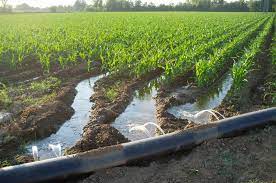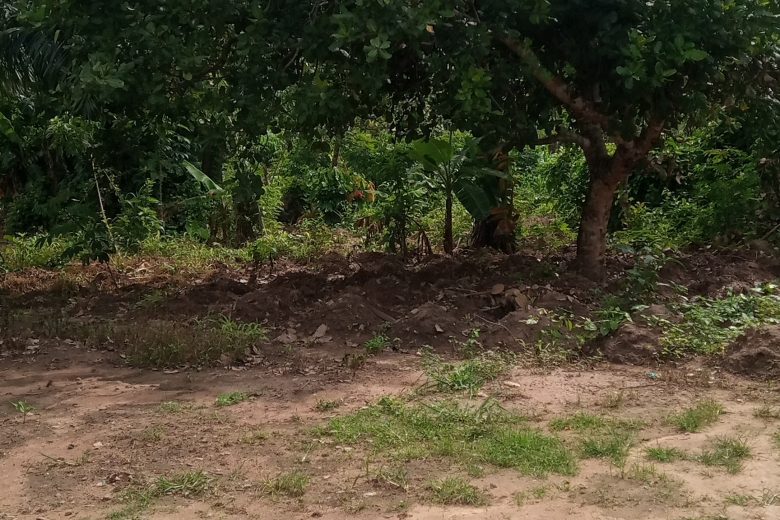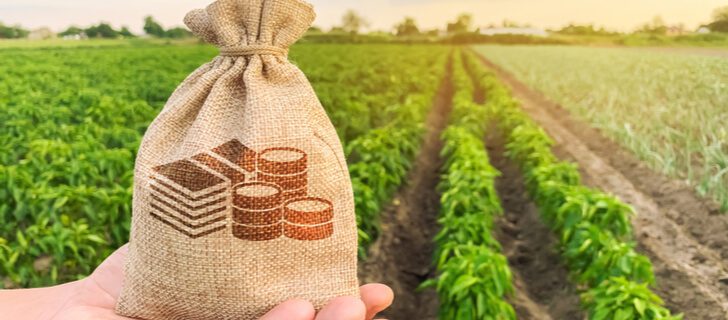Plant spacing and layout for plant propagation is an important part of successful plant production in South Africa. Properly spacing and arranging plants in the propagation phase helps to ensure the best possible environment for growth, as well as providing the most efficient use of space and resources.
This guide will provide an overview of the key considerations for plant spacing and layout in South Africa, from the selection of appropriate cultivars to the importance of utilizing proper spacing techniques. It will also discuss how to account for the effects of wind, temperature, and other environmental factors to achieve the best possible results.
By understanding these principles, growers can maximize the success of their propagation program and create the most productive and sustainable growing environment possible.
Plant Spacing and Layout for Plant Propagation in South Africa PDF [Complete Guide]
Plant spacing and layout are an important part of the propagation process, as they can impact the health and growth of plants. Plant spacing and layout can also affect the amount of sunlight and water that the plants receive.
Plant Spacing
Plant spacing is determined by the size of the plant, its growth habits, and the conditions of the site. It is important to consider the amount of space required for each plant to avoid overcrowding and ensure optimal growth. The ideal spacing between plants depends on the type of plants being propagated.
Trees
Trees should be spaced according to the expected size of the tree at maturity. Trees should be spaced far enough apart so that the branches do not touch when they reach maturity. The spacing should also take into account the size of the roots and the amount of space needed for them to spread.
Shrubs
Shrubs should be spaced at least one foot apart from each other. This will allow for adequate room for the roots to spread without overcrowding.
Herbs and Flowers
Herbs and flowers should be spaced at least 6 inches apart. This will allow for adequate room for the roots to spread without overcrowding.
Vegetables
Vegetables should be spaced according to the type of crop being grown. For example, tomatoes should be spaced 18 inches apart, while carrots should be spaced 3 inches apart.
Layout
When propagating plants, it is important to consider the layout of the plants. The layout should be planned in a way that maximizes the space available and allows for easy access to the plants. Considerations should also be made for the amount of sunlight and shade that each plant will receive.
A common layout for propagating plants is a grid pattern, with each plant spaced apart in a grid-like pattern. This allows for easy access to the plants, as well as a good balance of sunlight and shade.
Trees
Trees should be laid out in a way that allows for adequate space for the roots to spread. In addition, the layout should take into account the shape of the tree and the amount of sunlight that each tree will receive.
Shrubs
Shrubs should be laid out in a way that maximizes the use of the available space. The layout should also take into account the shape of the shrub and the amount of sunlight that each shrub will receive.
Herbs and Flowers
Herbs and flowers should be laid out in a pattern that allows for adequate space between them. It is important to take into account the size and growth habits of the plants when laying out the pattern.
Vegetables
Vegetables should be laid out in a way that maximizes the use of the available space. The layout should also take into account the size and growth habits of the vegetables.
Step-by-Step Spacing and Layout for Plant Propagation in South Africa
Step 1. Determine The Type Of Plants To Be Propagated.
Consider the soil type, climate, and type of plant when deciding which plants to propagate.
Step 2. Measure The Area
The area of the garden where the plants will be propagated should be measured. It is important that there is enough space for the plants to grow.
Step 3. Make Calculation
Calculate the number of plants that can be placed in the garden. Consider the size of the plants and the amount of space available.
Step 4. Determine The Spacing For Each Plant
The spacing should be wide enough to allow for adequate sunlight and air circulation, but close enough to ensure that the plants are not competing for resources.
Step 5. Plant The Plants At The Calculated Spacing
Make sure to follow the instructions for planting the plants correctly.
Step 6. Plant Care
Water the plants regularly and monitor their growth of the plants. Adjust the spacing as needed if the plants are not growing as expected. Also, apply fertilizer and mulch as needed to ensure healthy growth.
Step 7. Harvest
You can harvest your plants when they are ready.
Techniques of Plant Spacing and Layout for Plant Propagation in South Africa
Plant spacing and layout for plant propagation is an important part of successful gardening. Proper spacing and layout will help to ensure that the plants are healthy and have enough room to grow. There are several techniques for plant spacing and layout for plant propagation, including:
Square Foot Gardening
This is a popular method for small-scale gardens, where plants are spaced one foot apart in a square grid pattern.
Intercropping
This is a method where two or more compatible plants are grown in the same area. This can help to reduce competition between plants while increasing overall production.
Companion Planting
This is a method where two or more plants are grown together in order to benefit each other. For example, marigolds planted near tomatoes can help to ward off pests.
Contour Planting
This is a method where plants are planted in lines that follow the contours of the land. This helps to conserve water and soil, as well as reduce soil erosion.
Successive Planting
This is a method where plants are planted in succession so that there is always something growing in the garden. This helps to maximize the use of the land and reduce gaps in between.
Likewise, plant propagation in South Africa typically involves two main techniques: sexual propagation and asexual propagation.
Sexual Propagation
Sexual propagation involves the use of both male and female reproductive organs to produce offspring. This is usually done through sexual reproduction, such as pollination, or through artificial methods such as tissue culture.
Examples of sexual propagation techniques include grafting, layering, and division.
Asexual Propagation
Asexual propagation is the process of producing offspring from a single parent, without the need for sexual reproduction. This is usually done through methods such as cutting, layering, and division.
Asexually propagated plants are genetically identical to the parent plant, whereas sexually propagated plants are genetically diverse. Examples of asexual propagation techniques include cuttings, division, and tissue culture.
No matter which technique is used, it’s important to ensure the plants are well-maintained and have the right environment for healthy growth. Importantly, it’s important to pay attention to any potential pests or diseases that could affect the plants. By taking the time to properly plan and prepare for plant propagation in South Africa, gardeners can ensure their plants have the best chance of success.
What Are The Types Of Propagation Environments
Here are the various types of propagation environments.
Soil Propagation
This is the most common method and involves planting cuttings directly into the soil.
Water Propagation
Water propagation involves rooting cuttings in water instead of soil.
Hydroponics:
Hydroponics is a soilless method of propagation that uses a nutrient-rich solution instead of soil.
Aeroponics:
Aeroponics is a type of hydroponics that uses a misting system to deliver nutrients to the roots of plants.
Tissue Culture
Tissue culture is a more recent method of propagation that involves cloning plants from small tissue samples.
Grafting:
Grafting is an ancient method of propagation that involves splicing two different plants together to create a hybrid.
What Is Closed Case Propagation
Closed-case propagation is a method of plant propagation that involves the use of sealed containers and a regulated environment to facilitate the growth of plants from seeds or cuttings. The technique is used to propagate plants in a controlled environment, which helps to optimize the growth and development of the plants.
The container is sealed with a lid or a plastic film and the environment inside the container is regulated by the addition of nutrients, water, and air. The technique is used in the commercial production of plants and can also be used at home.
How To Grow Sisal Plant
Here is how to grow sisal plants from the beginning to the harvest stage.
Step 1. Purchase sisal seeds from your local nursery or online.
Step 2. Plant the seeds in a pot filled with well-draining soil and place it in an area that receives plenty of sunlight.
Step 3. Water the soil regularly, but do not overwater.
Step 4. Once the seedlings reach 3-4 inches, you can transplant them into individual pots.
Step 5. Place the pots in a warm, sunny location.
Step 6. Provide the sisal plants with adequate drainage and nutrition.
Step 7. Monitor the soil moisture and water as needed.
Step 8. Prune the sisal plants regularly to maintain their shape and encourage growth.
Step 9. Harvest sisal fiber from the plants once they reach maturity, usually after 1-2 years.
Managing The Propagation Environment
Managing the propagation environment involves controlling the environment in which plants are propagated. This includes controlling the temperature, light, humidity, and soil conditions. It also involves controlling the pests and diseases that can affect the plants. Managing the propagation environment can help ensure that the plants will have the best chances for survival and healthy growth.
What Kinds Of Containers Are Used For Propagation And Growing Young Liner Plants
Containers used for propagation and growing young liner plants can include plastic trays, pots, cell packs, plug trays, and root trainers.
How Do Leaf Bud Cuttings Differ From Leaf Cuttings
Leaf bud cuttings are cuttings taken from the stem of a plant that contains a leaf bud. The leaf bud is a small, undeveloped leaf that can be used to propagate the plant. Leaf cuttings, on the other hand, are cuttings taken from the leaves of a plant and are used to propagate the plant by rooting the cuttings in soil or water.
Sisal Plant Uses
- Floor Coverings: Sisal is a popular choice for floor coverings in homes and businesses, as it is incredibly durable and easy to clean. It can be installed as wall-to-wall carpeting, or as area rugs.
- Rope & Twine: The fibers from sisal plants are strong and flexible, which makes them perfect for making rope and twine. This is often used in the construction of ships and boats.
- Paper: Sisal fibers can be used to make a variety of paper types, such as wrapping paper, tissue paper, and even art paper.
- Bags: Sisal fibers are used to make various types of bags, such as tote bags, backpacks, and purses.
- Furniture: Sisal fibers can be used to make furniture, such as chairs, benches, and tables.
- Clothing: Sisal fibers can also be used to make clothing, such as hats, shirts, and skirts.
Conclusion
Plant spacing and layout are important considerations for plant propagation in South Africa. It is important to plan the spacing and layout of plants in order to maximize the use of the available space.
The spacing and layout should be determined by the size and growth habits of the plants. Following these guidelines will ensure that the plants are spaced and laid out in a way that allows for optimal growth and health.





One Reply to “Plant Spacing and Layout for Plant Propagation in South Africa PDF [Complete Guide]”